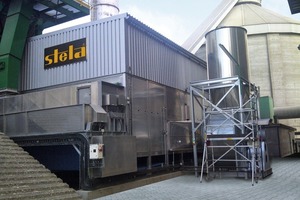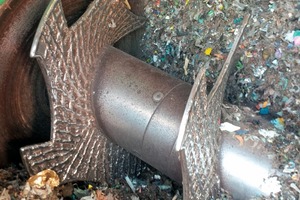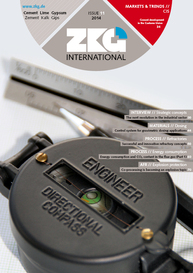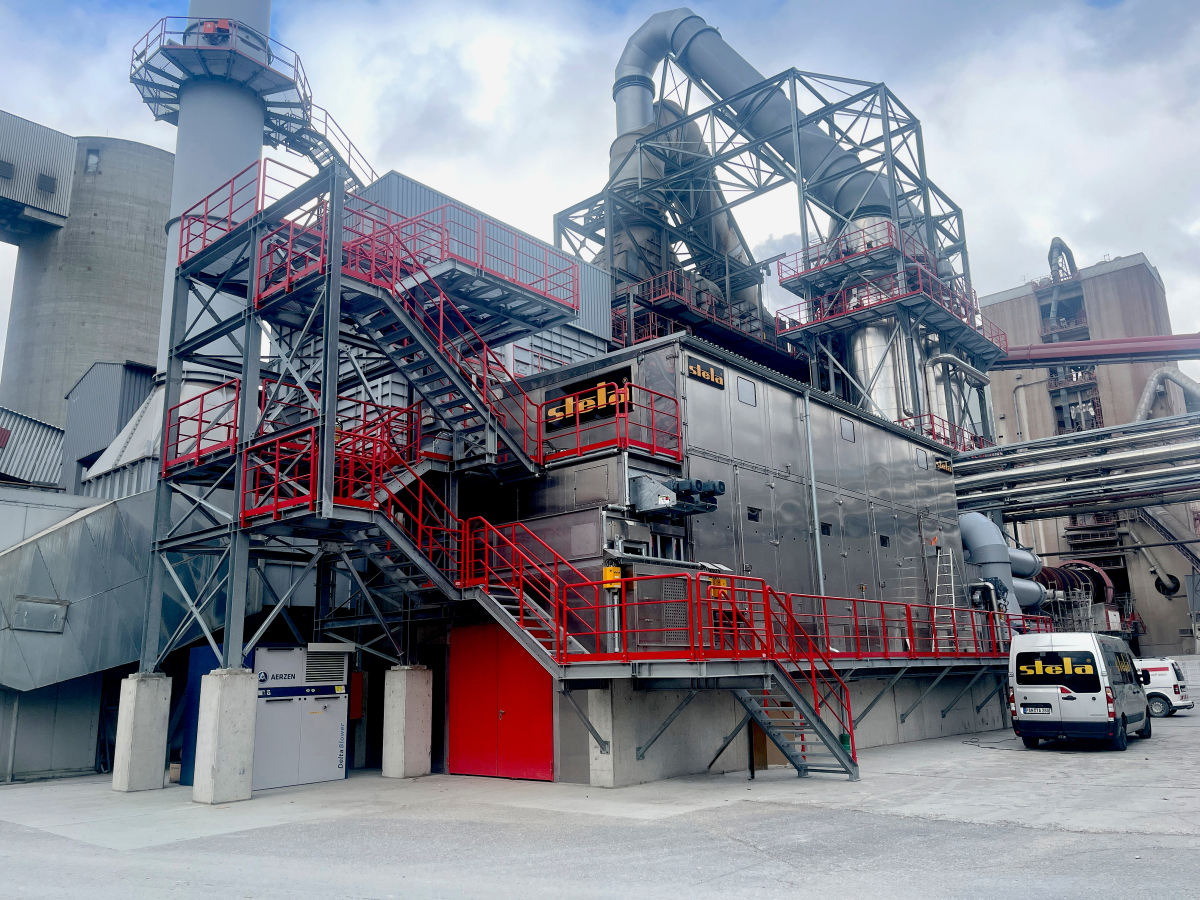Drying of solid recovered fuels in a belt dryer
To reduce the consumption of primary fuels such as oil or gas in order to bring down the emission of CO2, Solid Recovered Fuel (SRF) is coming into increasing use, particularly in the cement industry. The increasing demand for SRF is causing great quality variations in the available material, so that even moist input material is being increasingly employed. The fuel then has to be pre-dried in order to ensure that an optimum burning process is achieved in the rotary kiln.
Stela Laxhuber GmbH has developed a highly-efficient and individually adaptable system for drying SRF using available waste heat from the process. The objective is to increase the calorific value of the SRF and thus to reduce the usage of CO2 primary fuels such as lignite.
The input material with a moisture content of approx. 35 % and more is fed directly into the dryer via conveying systems. The material to be dried is fed onto the belt of the dryer and evenly spread out by a distributing device. A stream of hot air flows through the layer of wet material and continuously dries it to a residual moisture content of approx. 10 %. After drying, the product is fed by conveying systems into the rotary kiln and burnt.
The hot exhaust air from the clinker cooler can be used as the heating and drying medium. Inside the dryer, the process air with a temperature of approx. 250 °C is cooled down to the drying temperature of approx. 100 °C with fresh air. This drying process ensures safe and efficient drying of the SRF material. During the drying process, the layer of SRF material and a special fabric belt serve as filters in the dryer; which has an additional positive effect on the emission characteristics of the Stela low-temperature belt dryer. Stela is currently implementing the first projects together with Lafarge Cement in Poland (Fig. 1) and the Czech Republic.
In the CzechRepublic, a low-temperature belt dryer of type BTL 1/3000-8 was installed in spring 2014. At this plant, the exhaust air from the clinker cooler is extracted after the filter system and supplied directly to the belt dryer with a temperature of approx. 100 °C. The material is spread out evenly on the textile belt by means of a double distribution screw (Fig. 2) and conveyed continuously through the dryer tunnel. The evaporation capacity of the dryer is 1.2 tonnes of water per hour, which corresponds to an output capacity of 5.7 t/h of dried substitute fuel (Fig. 3).
In Poland, a low-temperature belt dryer type BT 1/6200-12 (see Fig. 1) with a drying surface area of 74 m² has been in operation since May 2014. Here the clinker cooler exhaust air is extracted directly before the filter system and has a temperature of approx. 250 °C. Inside the dryer, the process air temperature is mixed with fresh air in a mixing chamber, cooled down to approx. 100 °C and then distributed in the belt dryer. This drying plant works with an evaporation capacity of 3.8 t/h of water, which is equivalent to an output capacity of 10.0 t/h of dried product.
Stela belt dryers can be integrated easily into the existing process chain and are especially characterized by:
simple installation, due to the modular structure
low maintenance requirement, thanks to the use of long-lasting components
minimum operating effort, due to fully automated process control
low emissions, due to the Multivent system








